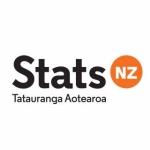Labour market remains tight
In seasonally adjusted terms, labour market conditions remained tight in the September 2007 quarter,Statistics New Zealand said today.
The survey recorded the lowest unemployment rate and the secondhighest number of people in employment.
The unemployment rate dropped 0.1 percentage points over the September 2007 quarter to 3.5 percent.
This is the lowest rate recorded in the 20-year history of the survey.
The number of people unemployeddecreased by 2,000 (2.1 percent), driven by a drop in female unemployment, while male unemploymentremained constant.
Employment decreased slightly from last quarter's highest recorded level, down 7,000 (0.3 percent) to2,150,000 in the September 2007 quarter.
This is the second highest level recorded since the survey beganin 1986. Over the quarter, part-time employment grew by 6,000 (1.3 percent), and full-time employmentdropped by 10,000 (0.6 percent).
There was growth in male employment, while female employmentdecreased.
The number of people in the labour force decreased by 8,000 (0.4 percent) to 2,229,000 in the September2007 quarter, while the working-age population grew by 7,400 (0.2 percent).
This resulted in a drop of 0.5percentage points in the labour force participation rate to 68.3 percent.
The female participation ratedropped 0.9 percentage points to 61.2 percent, while the male participation rate was unchanged at 75.7percent.
The number of people not in the labour force grew strongly by 18,000 (1.8 percent) in theSeptember 2007 quarter, with the majority of growth in this category driven by females.
Unadjusted unemployment rates decreased for the European and Pacific peoples ethnic groups over thequarter and increased for the MÄÂori and 'Other' ethnic groups.
There were no significant movements in theunemployment rate for any ethnic group on an annual basis. The unemployment rates for the September2007 quarter were 8.0 percent for MÄÂori, 5.5 percent for Pacific peoples, 4.9 percent for the 'Other' ethnicgroup and 2.4 percent for European
